This blog is your go-to guide for practical tips and recipes for constipation in toddlers.
If you are dealing with constipation in your toddler, you’re not alone. As a parent who’s been through it, I understand the stress and challenges – especially if you have a picky eater. My little girl had awful constipation around the age of two years old.
From understanding why constipation happens to learning the power of a balanced diet and hydration. And believe me, I’ve walked in your shoes, coaxing my little one to drink enough water and get enough fibre.
Let’s dive in and make constipation a thing of the past for our toddlers.
What is Constipation in Toddlers
Picture this: your toddler’s adorable smile suddenly turns into a frown, and they’re struggling with discomfort. That’s constipation – when those little tummies are having a tough time getting things moving.
Defining toddler constipation
In simple words, constipation means that your child’s poop is being a bit difficult to come out. It’s like a traffic jam in their digestive highway, and that’s no fun for anyone involved.
You might notice them straining, having fewer bowel movements than usual, or even feeling a bit irritable – all telltale signs of a constipated tummy.
Common Causes: Fibre and Fluid
Now, let’s get to the bottom of why this happens. One big reason is diet. If your little one isn’t getting enough fibre – that’s the superhero nutrient that keeps things moving – constipation can sneak up.
Imagine fibre as the magic wand that helps soften those stools and make them easier to pass.
Another suspect is fluid. Just like us, kids need their fluids. When there’s not enough liquid in the mix, poop can get hard and sticky.
Acting Swiftly for Comfort
Here’s the thing: constipation isn’t just a minor inconvenience; it can really put a damper on your toddler’s mood. Imagine how uncomfortable it must be for them.
That’s why addressing constipation promptly is a game-changer. By getting ahead of the issue, you’re helping your little one avoids unnecessary discomfort and tears during their potty adventures.
Remember, your toddler’s tiny tummy is still learning the ropes of digestion. So, whether it’s introducing more fibre rich foods or ensuring they’re staying well-hydrated, you’re setting them up for a happier tummy and smoother trips to the potty.
The Constipation Culprits
Diet Transitions: Remember when your toddler was just starting on solids? Well, their tiny tummy was still figuring out the ropes. The shift from breast milk or formula to solid foods can throw their digestion for a loop.
New textures, flavours, and nutrient profiles can lead to slower digestion and, you guessed it, constipation.
Fear of Potty Time: Ah, the potty – a mystical throne that’s both fascinating and intimidating. Some toddlers experience anxiety around potty training. Holding in poop can become a common reaction, and over time, this can lead to constipation.
Withholding Tactics: Sometimes, your toddler might figure out that holding onto their poop gives them a bit of control – and let’s be honest, they love to feel in control. They might tighten those little muscles and hold on, inadvertently causing constipation.
Spotting the Signs and Taking Charge
So, how do you know if constipation is becoming a regular visitor in your toddler’s life? Look out for signs like less frequent bowel movements, difficulty passing stool, discomfort during potty time.
Tips to help for constipation
Stay Hydrated: Offer fluids throughout the day. Water, diluted fruit juices, and clear soups can help keep things moving.
Fibre: Introduce fibre-rich foods gently. Fruits especially kiwi, vegetables, whole grains, and legumes are your allies in the fight against constipation.
Regular Potty Time: Encourage your toddler to sit on the potty at consistent times each day. Even if nothing happens, the routine helps.
Open Conversations: Talk to your toddler about potty time in a positive way. Make it an adventure rather than a chore.
Relaxation Techniques: Help your toddler relax during potty time. Reading a book or singing a song can make the experience more enjoyable.
Foods to help toddlers constipation
When it comes to tackling constipation in toddlers, your secret weapon lies in the world of food. Think of these foods as the superheroes of digestion – they’re here to save the day and ensure those tiny tummies stay happy and healthy.
Fruits
Pears: Nature’s natural laxative, pears are loaded with fibre and water content. Their juicy goodness can help soften stools and keep things moving smoothly.
Berries: Strawberries, blueberries, and raspberries are more than just delicious – they’re bursting with fibre, antioxidants, and vitamins that support digestion.
Apples: An apple a day might just keep constipation away. Rich in soluble fibre, apples can add bulk to stool and make it easier to pass.
Kiwi: Don’t underestimate the power of this small, fuzzy fruit. Kiwi is packed with both soluble and insoluble fiber, aiding digestion and promoting regularity.
Prunes: Prunes are rich in fibre and sorbitol, a natural sugar alcohol that can help soften stools.
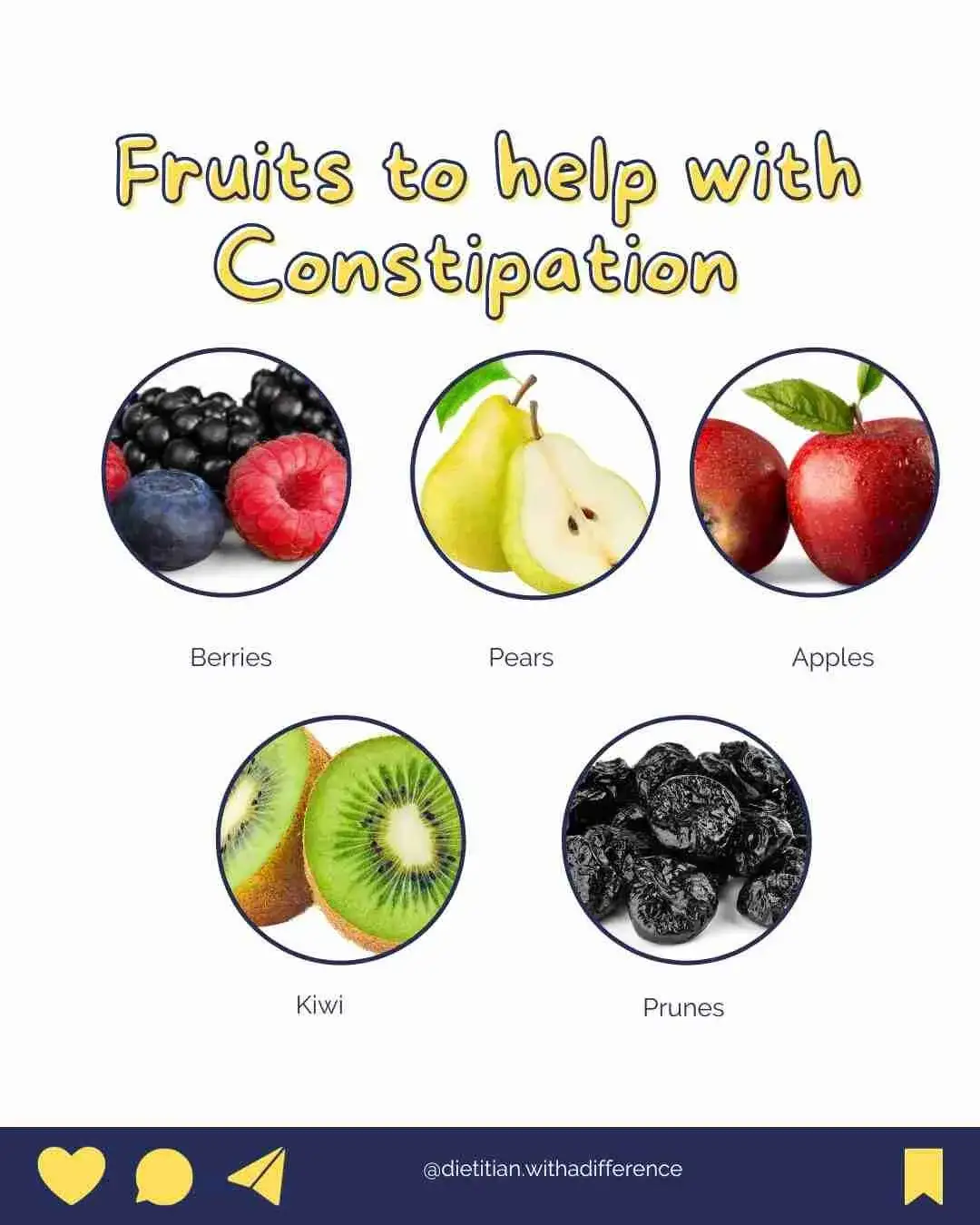
Veggie Champions
Spinach: Popeye was onto something with his spinach obsession. This leafy green is a fiber powerhouse that can keep constipation at bay.
Broccoli: Your toddler might not always be thrilled about broccoli, but their tummy is. This cruciferous veggie boasts both fibre and water for smooth digestion.
Sweet Potatoes: These vibrant spuds are not only delicious but also packed with fibre and nutrients that promote healthy bowel movements.
Whole Grains
Oats: A Oats are rich in soluble fibre that adds bulk and softens stools.
Legumes; Beans: Whether it’s black beans, kidney beans, or lentils, legumes are like a party for your toddler’s digestion. They’re packed with fibre, protein, and nutrients.
Chickpeas: Hummus, anyone? Chickpeas are a fantastic source of both soluble and insoluble fibre, helping keep things moving smoothly.
The Digestive Magic
These fiber-rich foods aren’t just delicious; they’re the secret to maintaining regular bowel movements. Fibre adds bulk to stool, making it easier to pass without causing discomfort. What’s more, these foods often have a high water content, which further softens stools and prevents constipation.
How can I soften my toddler’s stool fast?
When it comes to your toddler’s digestive health, a natural approach is often the best way to go. If you’re seeking a gentle way to alleviate constipation, there are several natural laxatives that can come to your rescue.
1. Water: Hydration Is Key
The simplest yet most powerful natural laxative for toddlers is water. Ensuring your child stays well-hydrated helps keep their stools soft and easy to pass. Make water easily accessible throughout the day.
2. Fibre Rich Foods: Nature’s Laxatives
Fibre is your ally in the fight against constipation. Incorporate a variety of high-fibre foods into your toddler’s diet, such as fruits, vegetables, whole grains, and legumes. These foods add bulk to stools and promote regular bowel movements.
3. Prunes and Prune Juice: The Classic Choice
Prunes and prune juice have a long-standing reputation as natural laxatives. Prunes are rich in fibre and sorbitol, a natural sugar alcohol that can help soften stools. Offering prunes or prune juice in moderation can be an effective way to provide relief.
4. Flaxseeds: Tiny But Mighty
Flaxseeds are packed with fibre and omega-3 fatty acids, making them a fantastic natural laxative option. Grind flaxseeds and sprinkle them on yogurt, porridge, or smoothies to add a fibre boost to your toddler’s meals.
5. Chia Seeds: Gel-Like Magic
Chia seeds are another excellent source of fibre. When soaked in liquid, they form a gel-like consistency that can help soften stools and aid in digestion. Mix chia seeds into puddings, smoothies, or yogurt for a tasty and gentle laxative effect. But take it slowly to start with as they do have a lot of fibre.
6. Movement and Physical Activity: Keep Things Flowing
Encourage your toddler to engage in regular physical activity. Movement helps stimulate the muscles in the digestive tract, promoting bowel regularity. Playtime, dancing, and outdoor adventures can all contribute to a healthy digestive system.
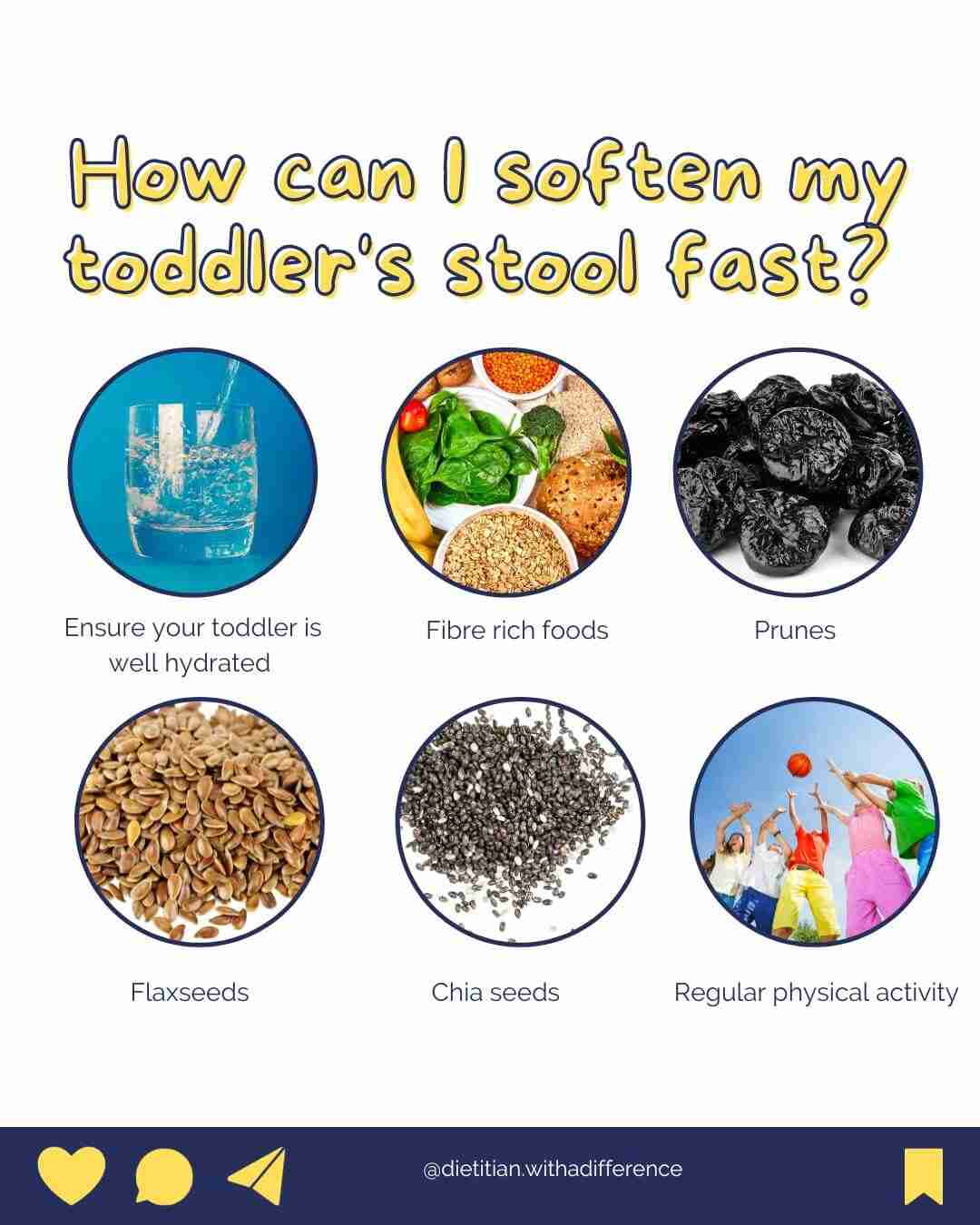
Remember: Moderation and Consultation
While these natural laxatives can be effective, it’s important to use them in moderation and under the guidance of a healthcare provider. Every child’s digestive system is unique, and what works for one might not work for another.
If constipation persists or if you’re unsure about introducing any new foods or remedies, always consult your healthcare provider for tailored advice.
5 Easy Recipes for Constipation in Toddlers
This is a question I get asked a lot but what can I cook for my constipated toddler?
Preparing delicious meals for your toddler that also combat constipation can be both fun and rewarding. We’ve gathered a collection of delightful recipes that are not only packed with fibre but also cater to your toddler’s taste buds.
Let’s dive into these tasty solutions that will keep your little one’s tummy happy and healthy.
Recipe 1: Constipation Smoothie
Ingredients:
1 ripe banana
½ cup fresh strawberries
½ cup fresh blueberries
1 kiwi, peeled and diced
½ cup Greek yogurt or dairy free yoghurt e.g. soya or oat
¼ cup water or apple juice (for desired consistency)
Instructions:
Combine all the ingredients in a blender.
Blend until smooth and creamy.
Adjust the consistency by adding more water or apple juice if needed.
Pour into a fun cup with a colorful straw and watch your toddler sip their way to digestive bliss.
Recipe 2: Cheesy Veggie Nuggets
Ingredients:
1 cup mixed vegetables (carrots, broccoli, and peas), steamed and finely chopped
1 cup shredded cheddar cheese or dairy free cheese
½ cup whole wheat breadcrumbs
1 egg or egg alternatives
1 teaspoon olive oil
A pinch of salt and pepper
Instructions:
Preheat the oven to 375°F (190°C) and line a baking sheet with parchment paper.
In a bowl, combine the chopped vegetables, shredded cheese, breadcrumbs, egg, olive oil, salt, and pepper.
Shape the mixture into small nuggets and place them on the baking sheet.
Bake for 15-20 minutes or until the nuggets are golden and crispy.
Serve with a side of yogurt dip for added yumminess.
Recipe 3: Apple Cinnamon Chia Pudding
Ingredients:
2 tablespoons chia seeds
½ cup unsweetened applesauce or a pureed apple pouch will work
½ cup milk (dairy or plant-based)
½ teaspoon cinnamon
1 teaspoon honey (optional)
Instructions:
In a bowl, mix the chia seeds, applesauce, milk, and cinnamon.
Stir well to combine and make sure the chia seeds are evenly distributed.
Let the mixture sit for about 15-20 minutes to allow the chia seeds to absorb the liquid and create a pudding-like texture.
Drizzle with honey if desired and serve as a delightful snack or breakfast option.
Recipe 4: Banana Oat Pancakes
Ingredients:
1 ripe banana, mashed
½ cup rolled oats
1 egg or egg alternative
½ teaspoon baking powder
A pinch of cinnamon
Butter or oil for cooking
Instructions:
In a bowl, mix the mashed banana, rolled oats, egg, baking powder, and cinnamon.
Heat a non-stick pan over medium heat and add a bit of butter or oil.
Pour small portions of the batter onto the pan to form pancakes.
Cook for a couple of minutes on each side until golden brown.
Serve with a drizzle of honey or a dollop of Greek yogurt for extra yumminess.
Recipe 5: Silly Spiral Veggie Wraps
Ingredients:
1 whole wheat tortilla or wrap
2 tablespoons cream cheese or hummus
½ cup spiralized or thinly sliced veggies (carrots, cucumbers, bell peppers)
¼ cup shredded cheese (cheddar or mozzarella) or cheese alternatives
A handful of baby spinach or lettuce leaves
Instructions:
Lay the tortilla flat on a clean surface.
Spread a layer of cream cheese or hummus over the tortilla.
Sprinkle the shredded cheese over the spread.
Place the spiralized or sliced veggies evenly on top of the cheese.
Add a layer of baby spinach or lettuce leaves.
Gently roll up the tortilla, tucking in the sides as you go, to form a wrap.
Slice the wrap into bite-sized pieces or fun pinwheels.
Serve with a side of yogurt dip or your toddler’s favorite sauce.
This Silly Spiral Veggie Wrap is not only visually appealing but also a great way to introduce veggies to even the fussiest eaters. The mix of colours, textures, and flavours will make mealtime exciting and enjoyable for your little one.
These recipes aren’t just about helping your toddler’s digestion – they’re about creating delightful culinary experiences that your little one will love. The best part? They’re quick to prepare, making them perfect for busy parents.
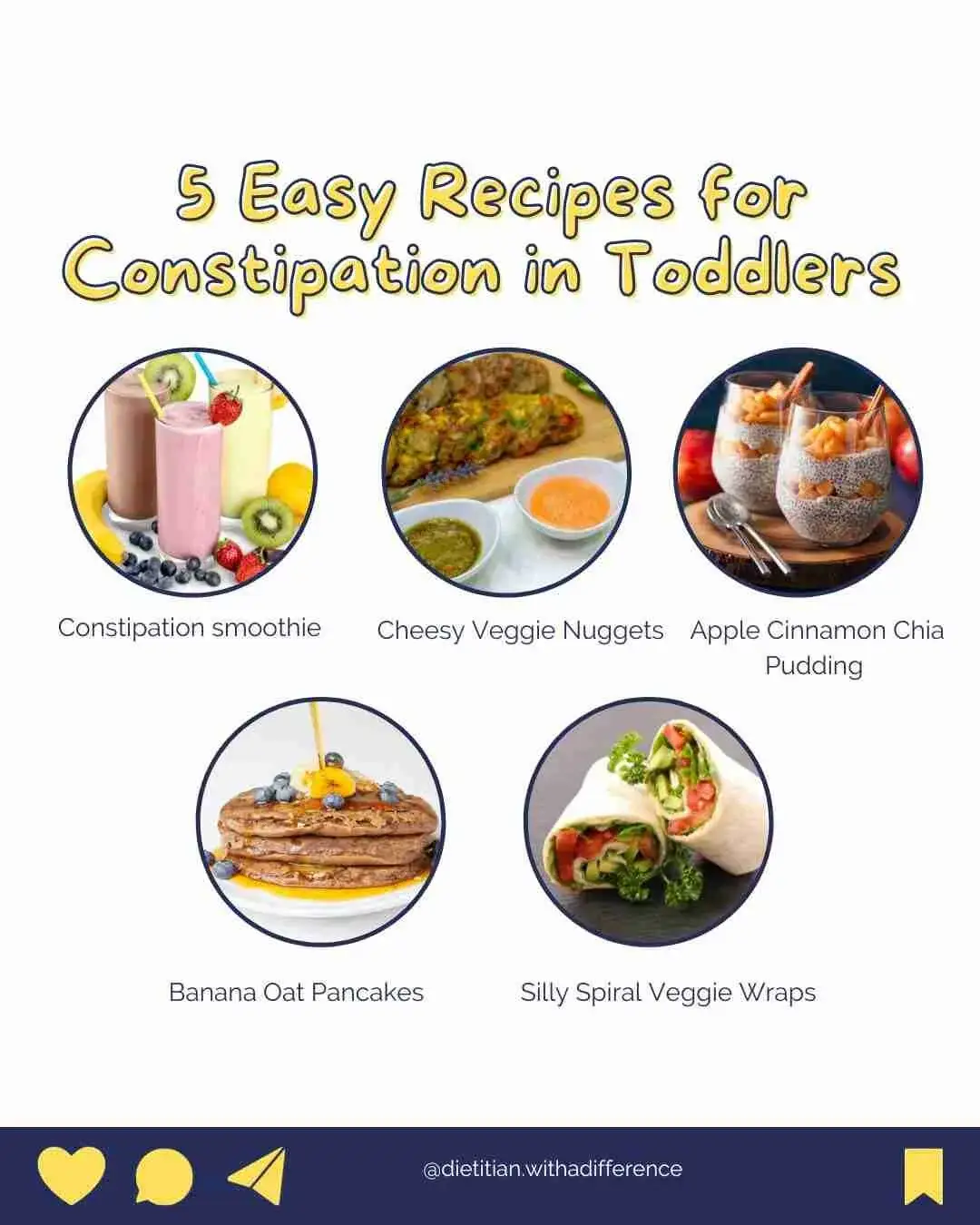
If Your Constipated Toddler is a Picky Eater
Patience and Persistence: Be patient and keep introducing new foods – it might take several to over 30 attempts before they warm up to something.
Small Steps: Instead of overhauling their entire diet, start by making small, gradual changes. Introduce one new fibre-rich food at a time and celebrate each victory.
Lead by Example: Let your toddler see you enjoying a variety of foods. Kids often mimic what they see, so if they witness your excitement for veggies, they might be more inclined to give them a try.
How Do I Know if My Toddler Is Pooing Enough?
Ah, the world of toddler bowel movements – a topic that often sparks curiosity, concern, and a touch of confusion among parents. If you’ve found yourself wondering about your little one’s potty patterns, you’re not alone.
Let’s dive into what’s considered normal when it comes to your toddler’s bowel movements and what signs you should be looking out for to ensure their digestive health.
Understanding Normal Bowel Patterns:
Toddlers, like adults, have a range of normal when it comes to how often they poop. Some toddlers might have a bowel movement every day, while others might go every other day. Both scenarios can be perfectly normal, as long as the stools are soft and easy to pass.
Variations in Frequency and Consistency:
Frequency: Don’t be surprised if your toddler’s poop schedule seems to change from week to week. Factors like diet, activity level, and hydration can all play a role in their frequency.
Consistency: Healthy toddler poop should be soft, formed, and easy to pass. Stools that are hard, dry, or pebble-like might indicate constipation.
Comfortable Passing: Watch for signs of ease during potty time. If your toddler seems to be straining excessively or appears uncomfortable, it’s worth investigating.
Consistent Pattern: While the frequency can vary, a consistent pattern for your toddler is key. Drastic changes in their usual poop routine might be worth discussing with a healthcare provider.
Color and Smell: Normal poop can vary in color and might be influenced by their diet. However, extremely pale or black stools could signal a potential issue. Contact your health professional if you are worried.
No Pain or Discomfort: A healthy digestive system should not cause pain or discomfort during or after bowel movements. If your toddler experiences pain, it’s a sign to look deeper.
Conclusion
In conclusion through the ups and downs of constipation, remember that you’re not alone in this adventure. I have been there before with my little girl so I know how distressing having a child with constipation.
From understanding the common causes of constipation in toddlers to exploring the power of fibre-rich foods, we’ve delved into a world of solutions that can make a world of difference. Remember to seek medical advice or a Dietitian for more support if you worried.
A balanced diet, hydration, and creative recipes can pave the way for a happier, healthier tummy for your little one.
As a mum and a dietitian, I know how stressful it can be to live through constipation. If you are worried about your child’s nutrition, book a free call or check out my consultation package to see if I can help your child with constipation.
Written by Emma Shafqat, Paediatric Dietitian RD. The information is correct at the time of publishing the blog.


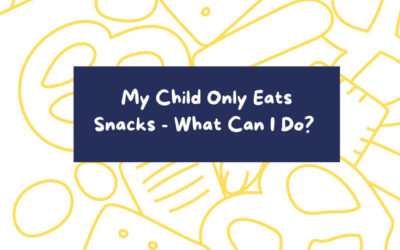
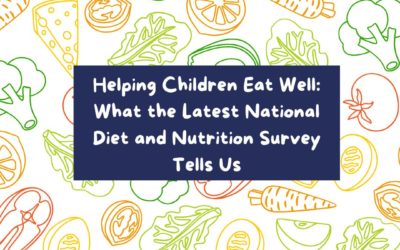

0 Comments